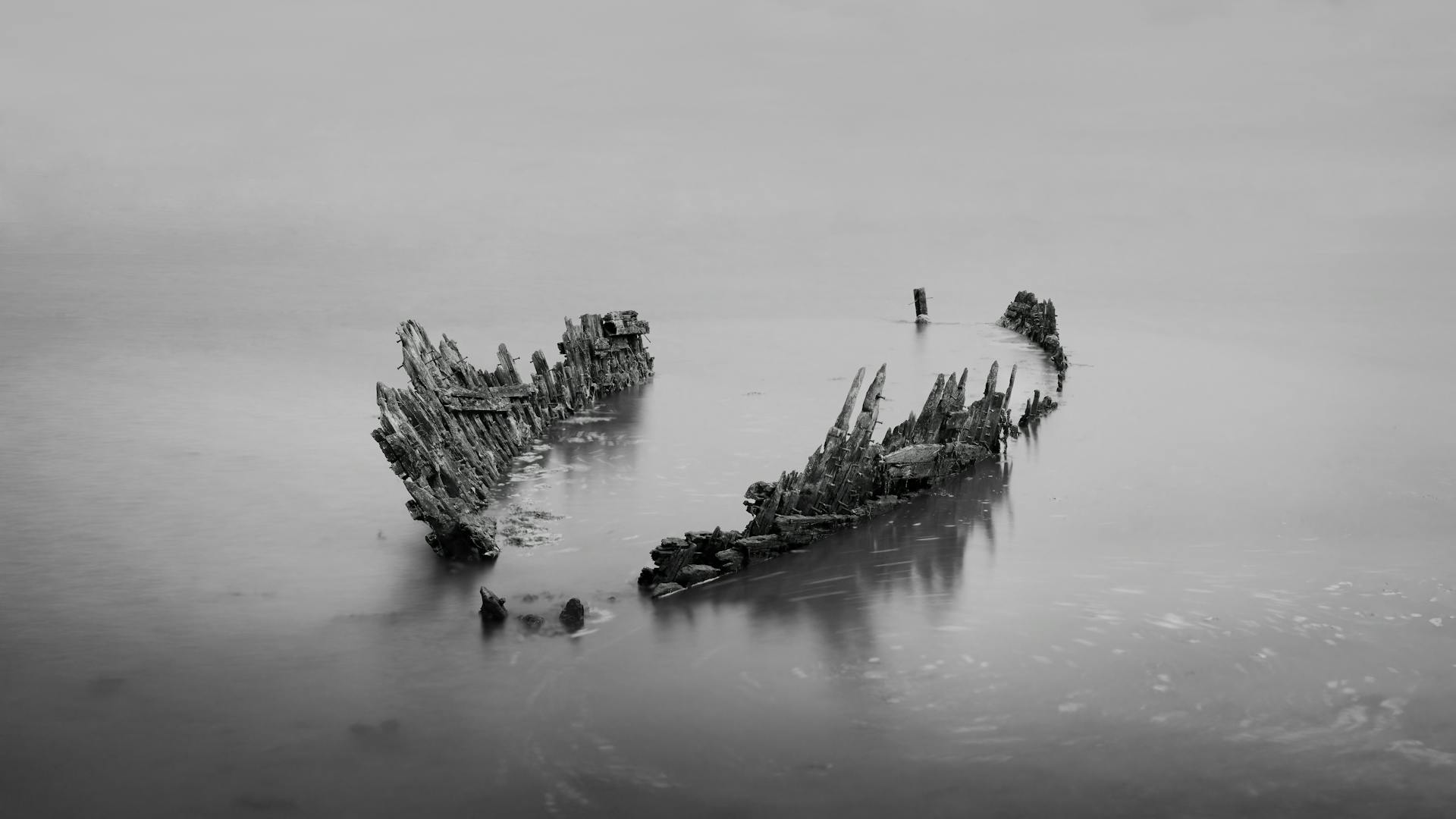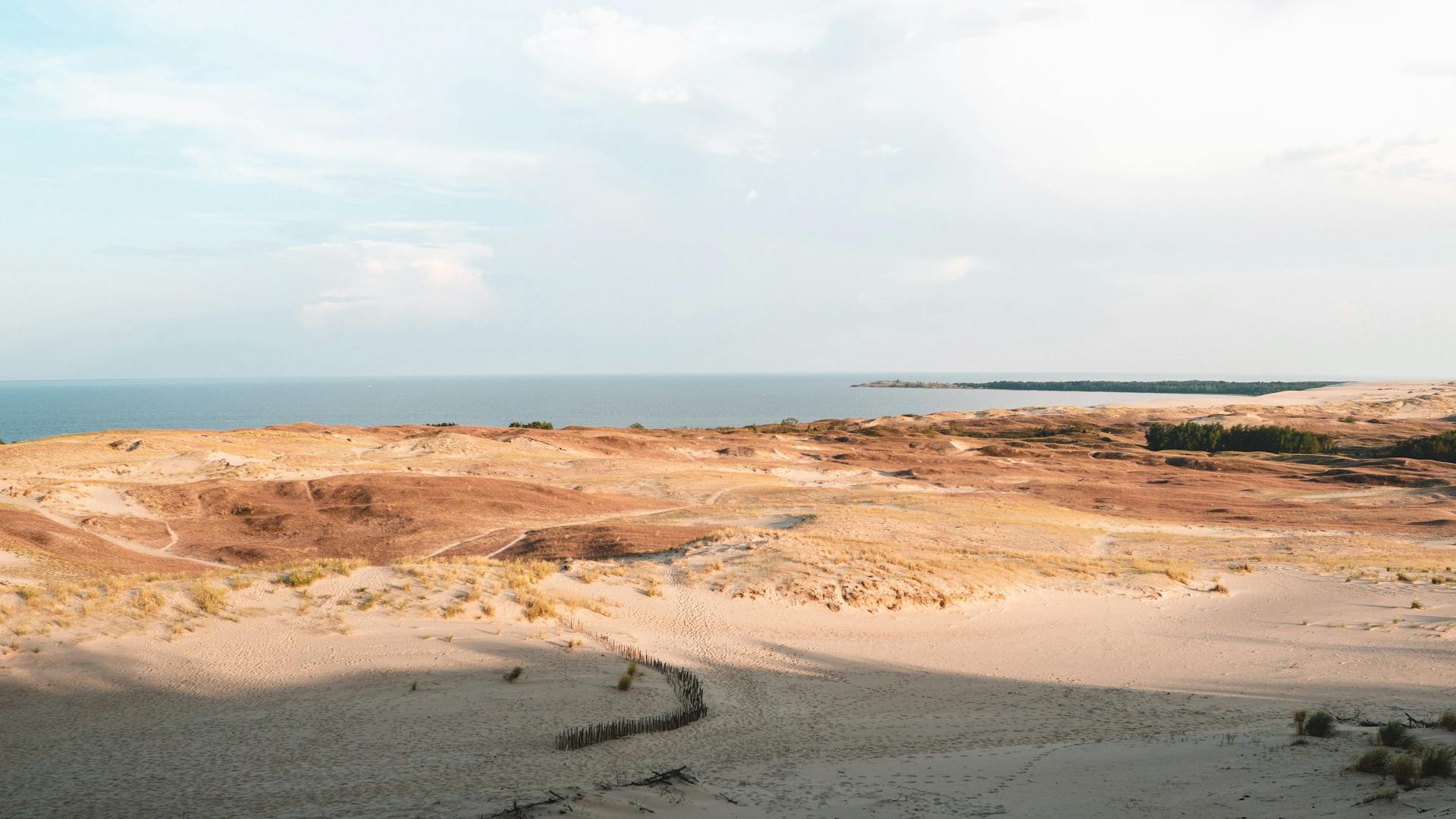
Klaipeda has a rich history that spans centuries, and it's fascinating to explore its transformation from a Lithuanian stronghold to a German-influenced city.
In 1253, the city was first mentioned in written records as a small trading post on the Baltic Sea. This marked the beginning of Klaipeda's growth as a significant port city.
The city's strategic location made it an attractive target for the Teutonic Knights, a German military order, who took control of Klaipeda in 1258. This led to a significant influx of German settlers and the introduction of their language and culture.
The city's population grew rapidly, with the number of inhabitants increasing from a few hundred to over 1,000 by the 14th century.
Lithuanian Takeover
The Lithuanian takeover of the Klaipėda region was a pivotal moment in its history. On January 9, 1923, Lithuania occupied the territory during the Klaipėda Revolt, mainly by militias that had entered the region from Lithuania.
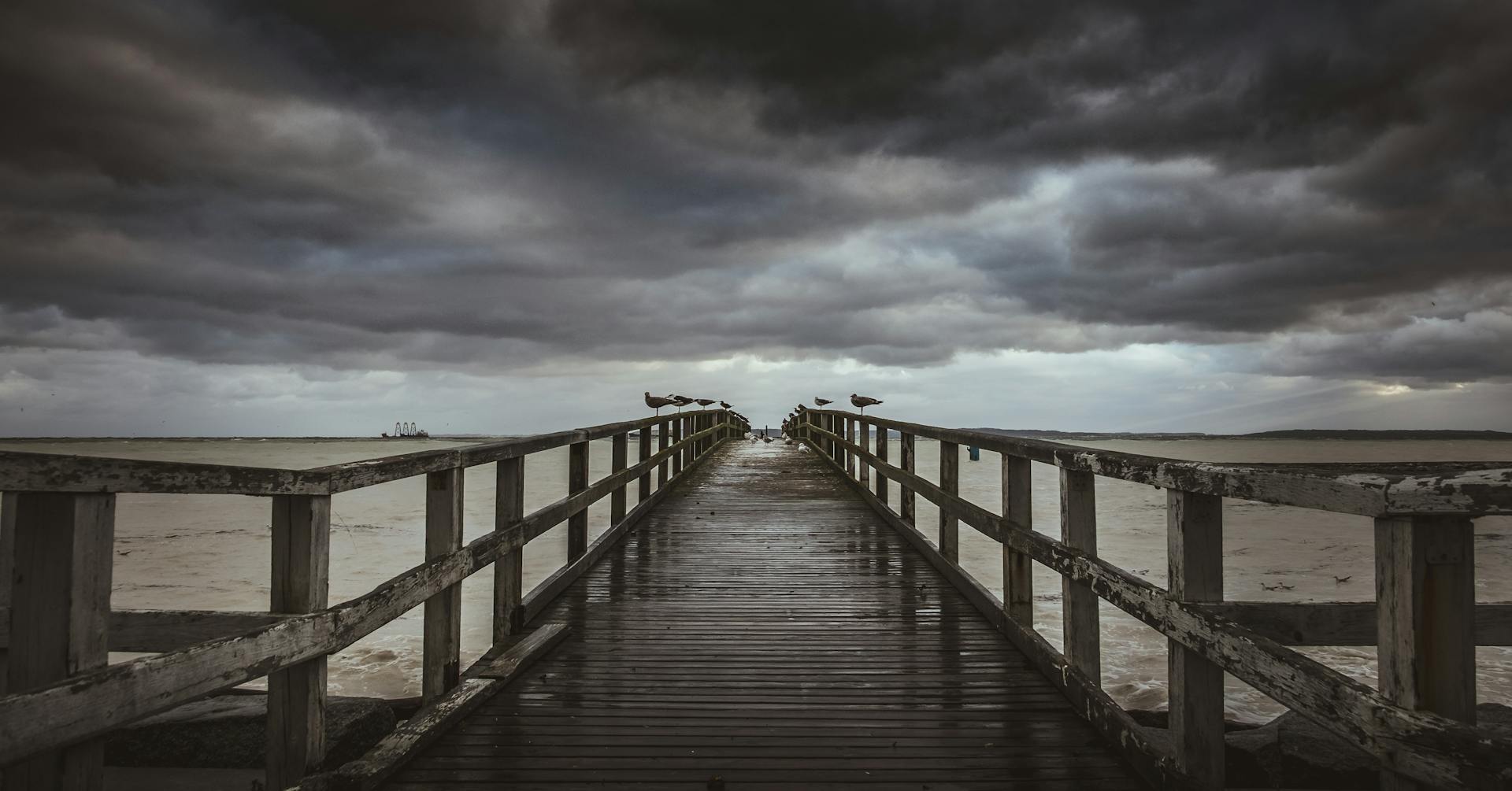
France had started the Occupation of the Ruhr in Germany around the same time, which likely took the French administration in Memel by surprise. The French administration in Memel did not take any significant counteractive measures against the rebels.
The Lithuanian takeover was eventually confirmed by the Council of Ambassadors in 1924, solidifying Lithuania's control over the region.
Lithuania and Klaipėda
Lithuania and Klaipėda were closely tied after World War 1, as Germany's non-German areas were annexed to other countries, including Lithuania.
The Klaipėda region had a slight Lithuanian majority, but its population was predominantly German, with 45,000 residents, 70% of whom were German.
Lithuania received international recognition in 1922, but the Klaipėda region was initially ruled by the League of Nations due to disputes with Poland.
A Lithuanian-supported revolt in 1923 led to the region being captured by the Supreme Salvation Committee of Lithuania Minor, which then asked to be accepted into the Republic of Lithuania.

The annexation was recognized by all nations, but the Klaipėda region was established as an autonomous territory where German and Lithuanian languages would enjoy equal status.
With the rise of Nazism in Germany in the 1930s, the local Nazi groups in Klaipėda began to act out in terror, leading to the first anti-Nazi trial in Europe after Hitler's rise to power.
Germany eventually annexed the Klaipėda region in 1939, after an ultimatum, similar to the one presented to Czechoslovakia for Sudetenland, with Adolf Hitler himself visiting the region.
German Influence
Klaipeda's history is deeply rooted in its strategic location on the Baltic Sea.
The city's port was a crucial factor in its development, with merchants from all over Europe trading goods in the 13th century.
German merchants were among the first to establish trade relationships with the local Prussians.
Their influence can be seen in the city's architecture, with many buildings featuring German-style half-timbered facades.
The Teutonic Knights, a German military order, also played a significant role in Klaipeda's history, establishing a castle in the city in the 14th century.
The city's name, Klaipeda, is actually derived from the German word "Klaipen", meaning "cliffs."
Klaipėda's History
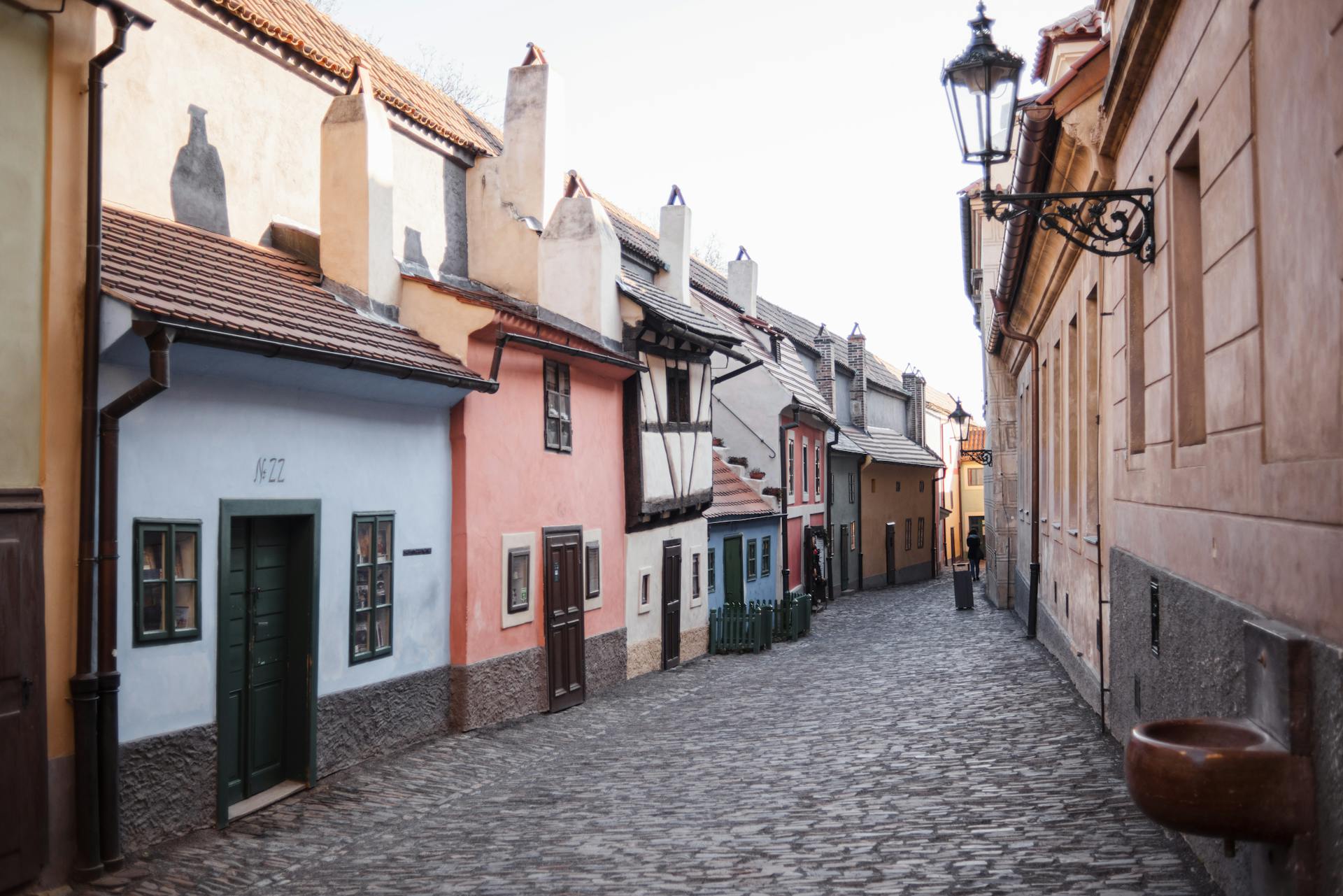
Klaipėda's History is a fascinating topic that spans centuries. The city was governed by Germans for centuries, including the German Order, Prussian Principality, Prussian Kingdom, and the German Empire.
The region was an out-of-the-way area with no natural economical hinterland, but it was home to the so-called lietuvininkai, people of Lithuanian origin, who were influenced by German culture and Protestantism. The term "minor Lithuanians" was widely used in literature after World War II.
In the late 19th century, the first cultural societies and organizations of Lithuania Minor were founded, but only a small part of the population was involved in these public activities. The negative attitude of Lithuanian Christian organizations towards the activities of Vydūnas and other public activists hindered the growth of national self-consciousness.
The Klaipėda region was defined after World War I, when the Peace Treaty of Versailles separated the territory from Germany. The region had a slight Lithuanian majority and was detached from the German state.
Middle Ages
In the 13th century, Klaipėda was founded in 1252 by the Teutonic Order as Memelburg, with virtually no Lithuanians in the area.
The Teutonic Order conquered many western Balts in Lithuania Minor, including the Skalvians, Nadruvians, and Yotvingians, setting the stage for centuries of conflict.
The Teutonic Order constructed Memel Castle in 1252, which stood at the north end of the Curonian Spit, where the Dangė river flows into the Neman.
A small portion of the land was controlled by the Curonian Megava tribe, which fell under the influence of Samogitians instead of Germans.
Legend of Name
The Legend of Name Klaipėda is a fascinating story that dates back centuries. The legend tells of a tribe settled near the Akmena River who worshipped Fire and the Sun.
According to the legend, the tribe sent two bravest hunters, Elnias and Vilkas, to search for a better place to live. Elnias and Vilkas were brothers, described as blond-haired and blue-eyed.
Their journey took them through forests and oak-covered hills, where they spotted an expansive blue sea from a high vantage point. The brothers saw the sea as a sign of a fertile land and a boundless resource.
Elnias successfully reached the coastline and thought to himself that this was the perfect place to bring his tribe. However, Vilkas took a different path along the mouth of the Akmena River and disappeared forever.
Vilkas's disappearance was marked by a treacherous footprint that was swallowed by the swamp. This footprint became the namesake of the place where Vilkas vanished, Klaipėda, which translates to "Wandering Footprint".
History of
Klaipėda's history is a complex and fascinating tale that spans centuries. The city was once governed by Germans, including the German Order, Prussian Principality, Prussian Kingdom, and the German Empire. For centuries, it was an out-of-the-way region, having no natural economical hinterland and of little interest to Koenigsberg.
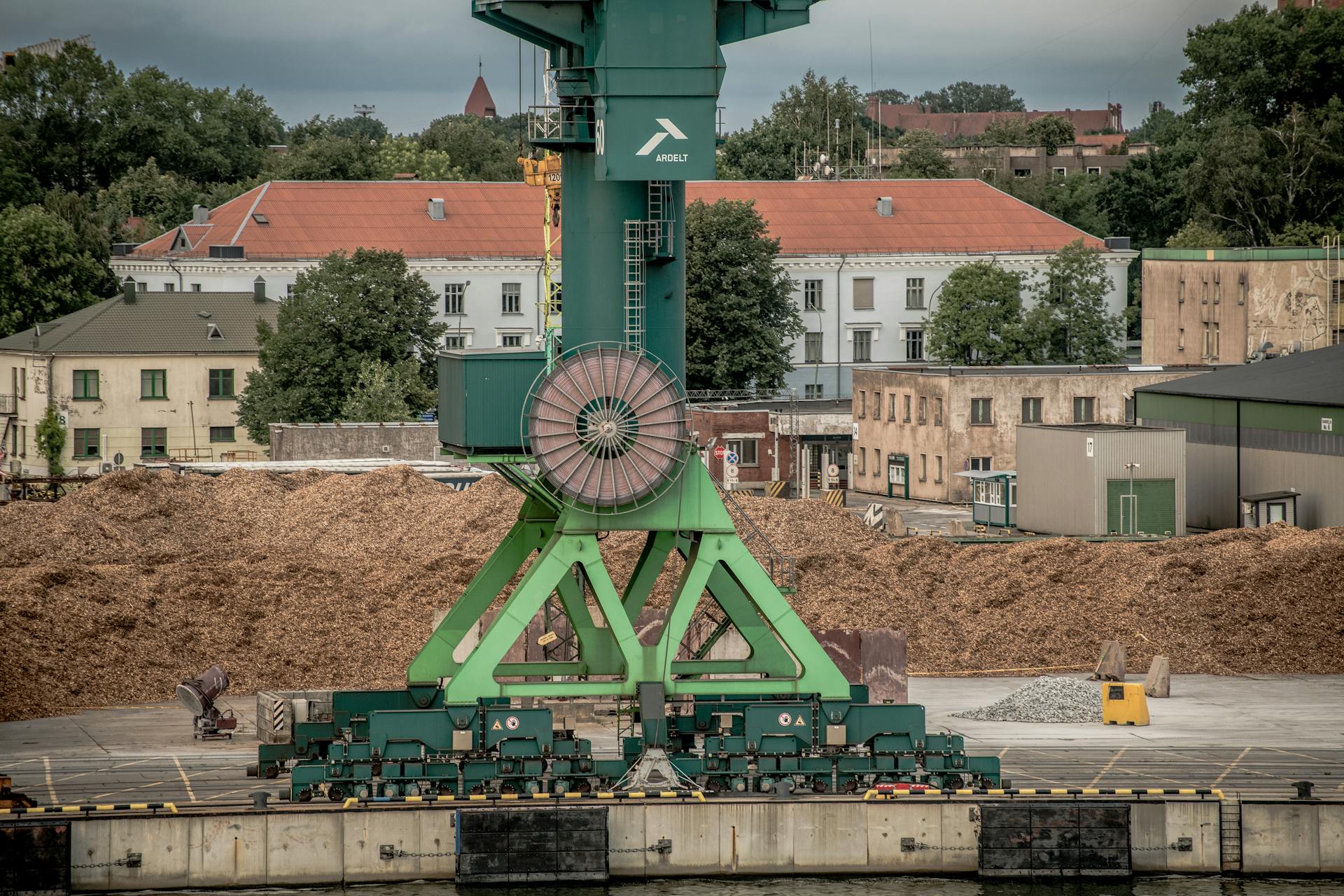
The city's population was predominantly German, with 70% of the population of 45,000 being German in 1918. However, the surrounding areas were 70% Lithuanian, giving the region a slight Lithuanian majority.
In 1923, a Lithuanian-supported revolt took place, and the region was captured by the Supreme Salvation Committee of Lithuania Minor, which asked to be accepted into the Republic of Lithuania. The autonomy was established, but this did not solve every problem.
The city's unique mix of German and Lithuanian heritage and history makes Klaipėda unique not only in Lithuania but the whole world. The city has two names, Klaipėda and Memel, due to its German roots.
The Treaty of Versailles defined the southern border of the Klaipėda Region, which was later incorporated into the State of Lithuania in 1923. The region was governed by the French from 1920 to 1922.
The city's population was approximately 141,000 in 1925, and it was divided into the town of Klaipėda and Klaipėda District, Šilutė District, and Pagėgiai District. The city's heritage is still visible today, with many historical landmarks representing the city's past.
The city's history is a testament to its strategic location, being the northernmost port in the Baltic Sea that doesn't freeze during the winter. This unique feature has made Klaipėda an important port not only in Lithuania but in the whole region.
Intriguing read: History of the Port of Tianjin
Exploring Klaipėda
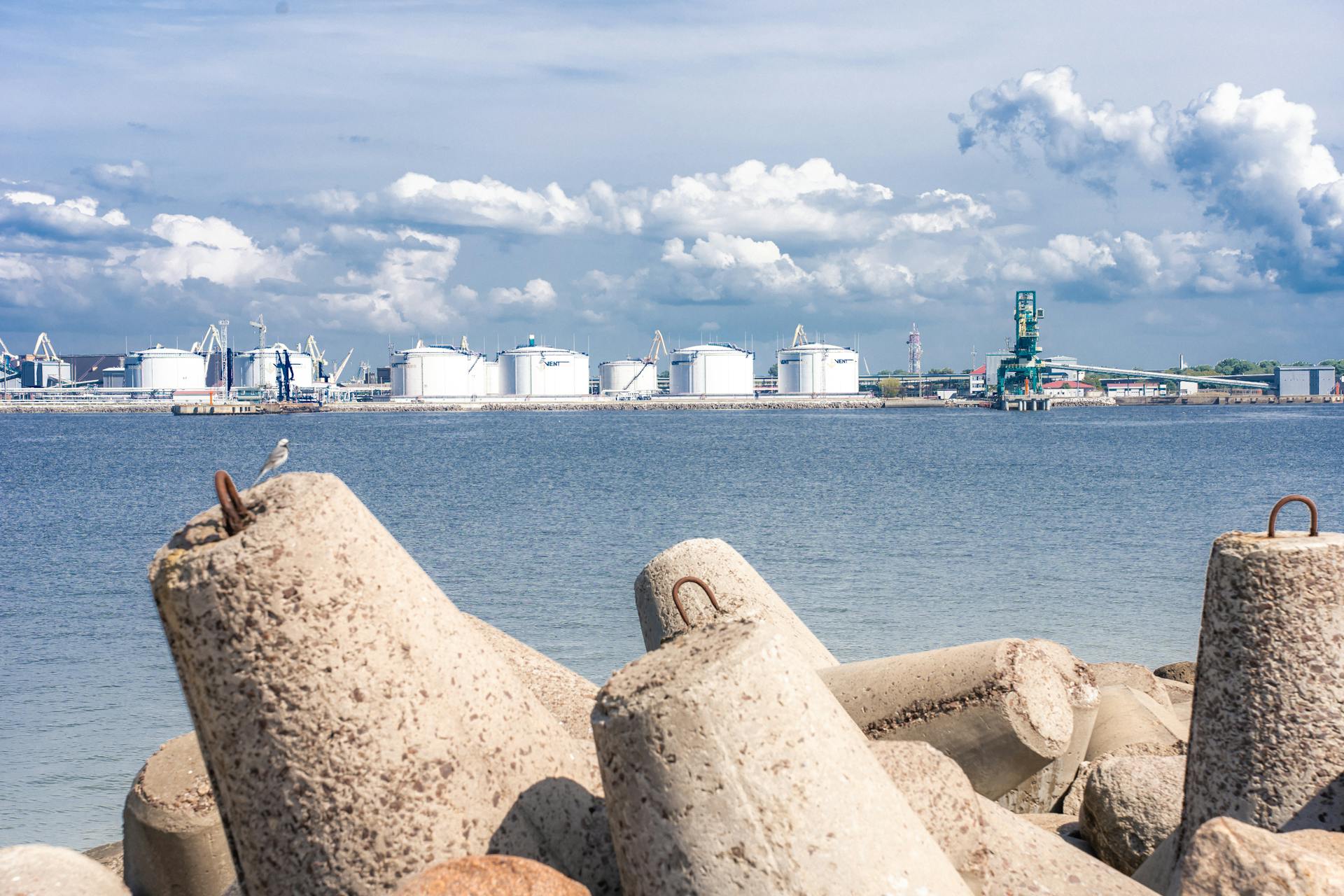
Klaipėda is the third largest port in Lithuania, and its strategic location makes it the most important port in the region.
The city's unique geography is a major factor in its importance, as it's the northernmost port in the Baltic Sea that doesn't freeze during the winter.
However, this may change due to the effects of climate change, which could alter the city's role in the region.
Klaipėda has its own distinct heritage and influences, shaped by its German roots, which is why it's also known as Memel.
Growing up as a native, it took me a while to grasp that Klaipėda and Memel are actually the same place, but now I appreciate the city's rich history and cultural diversity.
The city's Art Deco architecture from the interwar period is a notable feature, and it's been recognized by UNESCO World Heritage Sites, just like Kaunas.
However, Klaipėda's history is not just about its architecture, but also about its complex past, which has been shaped by its different influences and historical landmarks.
Consider reading: History of the Port of Southampton
Frequently Asked Questions
What are some interesting facts about Klaipėda?
Klaipėda is the oldest city in Lithuania and the Northernmost ice-free port on the Eastern coast of the Baltic Sea. Founded in 1252, it boasts a rich history and unique status as the only port in Lithuania.
What does the name Klaipėda mean?
The name Klaipėda likely originates from the Curonian words "klais/klait" (flat, open, free) and "peda" (sole of the foot, ground), referring to the city's relatively flat terrain. It can be translated to "even ground" or "flat terrain
What happened in Lithuania in 1923?
In 1923, the Klaipėda Region, a territory north of the Neman River, declared independence from Germany and became a mandate of the League of Nations. This event marked a significant shift in the region's history and had far-reaching consequences for the area.
Sources
Featured Images: pexels.com


